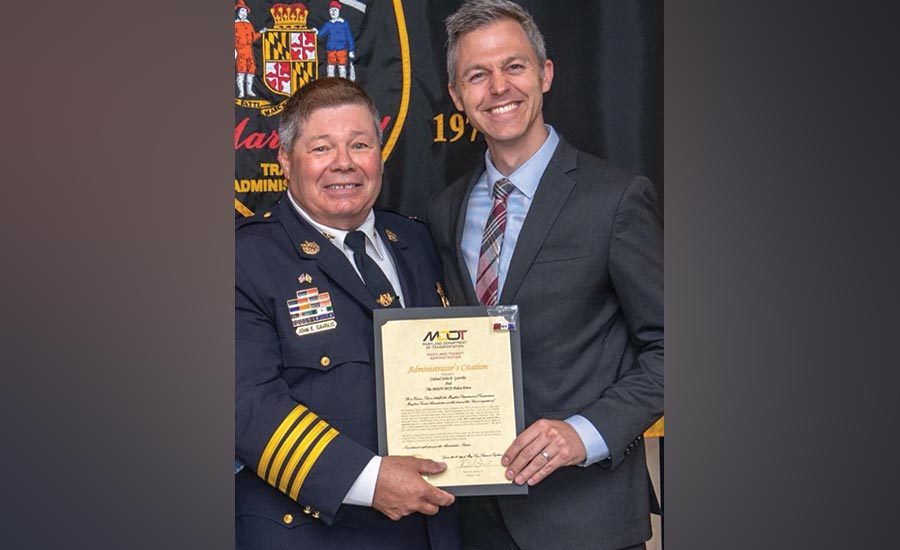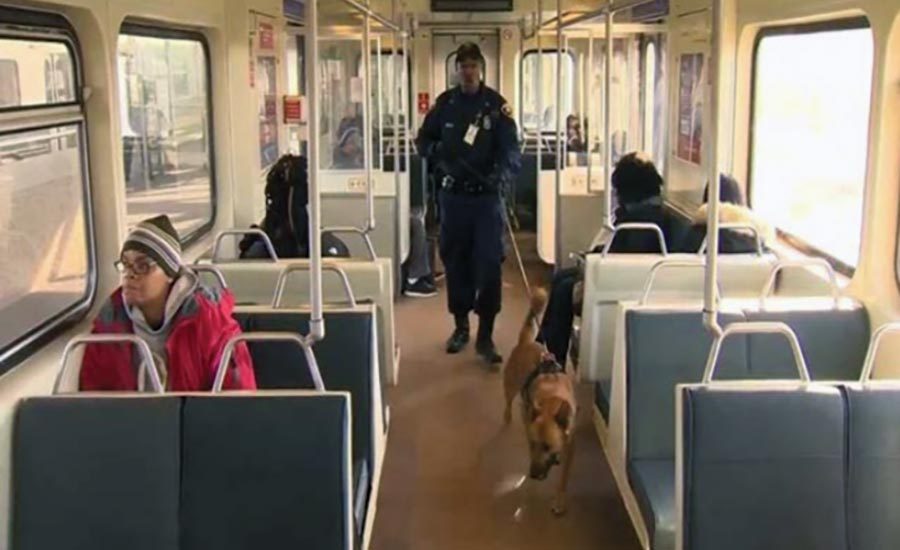Transit agencies turn to upgrades in equipment, technology, policies and training to keep riders safe.
After 18-year-old Nia Wilson was stabbed to death upon exiting at Bay Area Rapid Transit (BART) train in Oakland last July, BART released a comprehensive Safety and Security Action Plan to address concerns over violent crime and fare evasion.
The plan, which resulted in extra patrols that saturate certain areas at certain times, covers ground similar to the initiatives underway in rapid transit agencies across the nation to combat the mixture of crime and terrorist attacks that could impact riders of buses, trains and other transit. The BART plan perhaps came about at a more rapid pace than those of other transit agencies presented before the agency’s board of directors within a couple weeks of the Wilson stabbing.
The top-to-bottom review resulted in a $28 million plan encompassing such initiatives as emergency staffing that require some officers to work longer hours, uniformed BART Employee Station Teams to provide greater visibility, station hardening initiatives to combat fare evasion, installation of three emergency call boxes on every platform, testing and implementation of a physical security information management system with cutting-edge video analytics, installation of video screens with real-time station images and migration to an all-digital camera network in stations, parking lots and garages.
These initiatives have enhanced a system that already has more than 4,000 working cameras, has been attempting to add officers whenever possible and has offered the public the #RideSafe app on social media, enabling riders to send a private text to BART police dispatch. “BART has always been focused on public safety, but it’s clear that we must do even more,” BART General Manager Grace Crunican said. “The tragic murder of Nia Wilson has deeply saddened everyone at BART, as well as the communities we serve.”
Riding Safe in Maryland
The desire to avoid tragedies like the Nia Wilson slaying due to either run-of-the-mill criminals or terrorist attacks, as well as tamp down nonviolent crimes, has motivated other agencies across the country to tighten up their security practices.
The Maryland Department of Transportation Maryland Transit Administration (MDOT MTA), which provides core services in Baltimore covers six modes of transportation: city bus, light rail, subway, commuter rail, commuter bus and mobility services, says Colonel John E. Gavrilis, chief of police for MTA.
He says the agency has intertwining strategies to combat crime and terrorism that creates a high level of vigilance—leading to recognition such as four American Public Transportation Association (APTA) Gold Awards for security.
The MDOT MTA also has the lowest number of Part I crimes in the largest 12 transit agencies nationally five years in a row, according to a survey from the Metropolitan Atlanta Rapid Transit Authority (MARTA), with Part I crime overall down 63 percent over the past decade. (Part I crimes are defined as homicides, aggravated assaults/shootings, rape, robbery, burglary, larceny, auto theft and arson.)
Among the effort and strategy leading to MTA’s success has been building relationships with 51 federal, state and local agencies with which the transit administration has concurrent jurisdiction across its “hundred stations, facilities and platforms,” Gavrilis says. Federal air marshals and other police departments target the rail system with increasing numbers of sweeps, facility checks and an omnipresence of uniformed and plainclothes officers. “To cover six modes, you have to become innovative,” he says.
That starts with people, Gavrilis says. On the commuter rail system, MDOT MTA leverages its relationships with other levels of government to increase its presence, with a couple hundred law enforcement officers riding the train daily to be able to communicate electronically with the agency and report suspicious activity, he says.
The agency leverages a Department of Homeland Security-funded police monitoring facility and emergency operations center that enables officers to be dispatched in real-time based on intelligence gained from video surveillance. MDOT MTA has cameras in most facilities and most conveyances that work as a force multiplier and deploys them whenever trends in suspicious activity tick upward.
MDOT MTA has started a drone program to monitor areas where people and cameras cannot. For example, if there is a trespasser on the track, “it’s a lot safer to use the drone to clear the track than put an officer out there,” he says. “The drone identifies the location, and we can dispatch a vehicle to that location. The drone can also act as a crime prevention tool, like larceny from a large parking lot, for example.”
The agency also deploys TSA-trained K9 dogs that can detect explosives. “We also have canines there just to increase the level of presence in our facilities,” Gavrilis says. “That’s a great deterrent against any terrorist.” MDOT MTA has a chemical detection capability that gives warning about “most types of airborne threat in our system,” he adds.
Individual officers carry smart phones with GPS capability, which helps them keep in contact if their radio should malfunction—and if they go down, the nearest colleague can locate them. “GPS also works as a management tool for our supervisors,” Gavrilis says.
“They can deploy the closest units to an incident based on the GPS for that officer.” The system’s monitoring facility has automatic vehicle locators for most modes of transportation, “so we can know at any specific moment where our conveyances are.”
The MTA’s sharp reduction in crime has come about due to smart use of technology and a focus on quality-of-life issues and crimes that impact the system, with personnel deployed based on trends, Gavrilis says. Most of all, he adds, “We invest in the people, in the recruitment of the persons we hire and we have one of the best training programs. We equip officers with the knowledge to do their jobs safely.”
The training program provides knowledge ranging from officer safety to constitutional policing, Gavrilis says. “All of our officers go through real scenario-based training, shoot/don’t shoot, so they’re better prepared when they go out on the street,” he says. The department has brought in former Israeli personnel for training on how to identify the characteristics of a terrorist or gunman, he adds, “which means our officers are better trained to identify threats to our system.” And supervisors and commanders receive enhanced training in leadership.
Keeping an Eye on Atlanta
The Metropolitan Atlanta Rapid Transit Authority (MARTA) sees crime and terrorism as its top threats and has taken many steps similar to those of MDOT MTA. MARTA works with outside agencies like the FBI to keep tabs on threats, and uses a battery of more than 15,000 closed-circuit television cameras on buses and trains, stations and other public areas.
The agency is in the process of upgrading from analog to digital cameras, for higher resolution and the capability to interface with video analytics and facial recognition, says Kris Mattson, manager of security & emergency management. “We’re trying to make sure we’re always approaching the cutting edge on all of those systems as the technology is advancing,” he says.
All officers are equipped with body cameras to help them be more transparent and build the public’s confidence in them, says Joseph Dorsey, deputy chief. MARTA has also outfitted officers in high visibility uniforms so that they are more visible to patrons and employees.
To encourage public involvement, MARTA provides a free “See and Say” app that the public can download to be able to report information to the Police Communications Center in real time. People can upload a photo of an incident in progress via text message, and police will respond, Dorsey explains.
The department deploys officers and K9 units based on its M*PACT philosophy, which stands for MARTA Police Proactively Attacking Crime Trends.
“We constantly look at what’s going on and make adjustments based on five principles: setting specific objectives, timely and accurate intelligence, effective tactics, rapid deployment of personnel and resources, and relentless follow-up and assessment,” Dorsey says.
Officers receive training when they first join the department and annually in accordance with state regulation as well as MARTA's desire to maintain a highly trained workforce. At the outset, they gain an understanding of how MARTA works, how information flows, how the incident management system unfolds and they go through a terrorism awareness program.
In addition, MARTA has partnered with Transportation Security Administration to deliver civilian-oriented programs to raise awareness among the entire workforce. This training, combined with an extensive emergency management and emergency operations program, positioned MARTA to receive the TSA Gold Standard for excellence for the second time, Mattson says.
The department also undertakes an annual training and exercise program designed to immerse officers in a scenario that challenges them and hones their skills when dealing with major incidents. “These programs drive the modification of planning, training and response, and enable the authority to be ready for scenarios very difficult to plan for,” he says. “This ‘full on assault to the system’ is an invaluable addition to the MARTA police program.”
“There’s nothing you can do to guarantee safety, but there’s things we can do to help minimize risks,” Dorsey says. “That’s going back and looking at everything—effective deployment, the high visibility uniforms, things like the See and Say app, using patrons as a force multiplier. The body cams to build the confidence of the community. Reaching out to the community. Attending events. Building an excellent relationship with local and federal law enforcement. And the CCTV camera coverage throughout all stations and on our rolling stock, trains and buses.”
Becoming Cyber Aware
In addition to physical threats like crime and terrorism, transit agencies need to guard against cybersecurity incidents as well, says Brian Harrell, assistant director for infrastructure security at the Department of Homeland Security’s Cybersecurity and Infrastructure Security Agency.
“All critical infrastructure sectors are vulnerable to evolving cyber threats,” he says. “However, transportation companies are increasingly dependent on cyber systems to business, security and operational functions. Transportation services rely on cyber technology, including positioning, navigation, tracking, shipment routing, industrial system controls, access controls, signaling and communications. Continuity of operations and system resilience following a disaster are increasingly dependent on the recovery of these cyber systems.”







